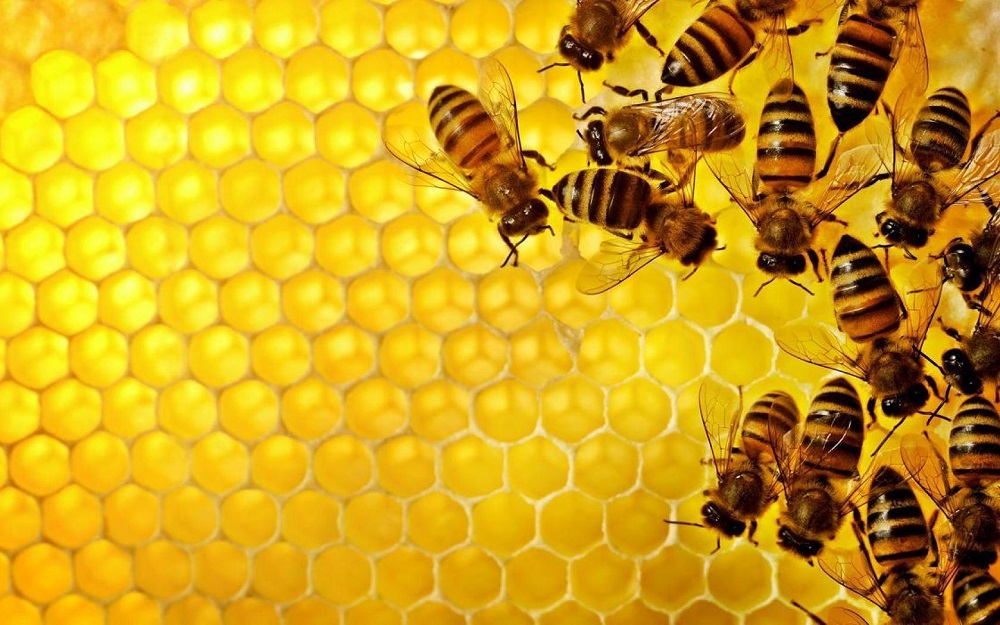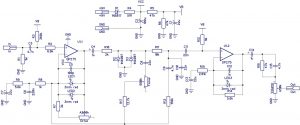
Miel Doux
A few years ago a new trend has started for low gain overdrive effects. People have realized, that a very little distortion on the clean sound can make it more organic and can add some warmth to it. The goal was – as always with overdrive effects – to simulate the very little breakup that tube amps can produce when driven with the proper level of signal. Often these low gain pedals can be driven even harder with a boost in front of them, producing more distortion – yet another analogy with the tube amps. One of the best representatives of this pedal family is Mad Professor’s Sweet Honey overdrive. It has the usual Level and Drive pots, but instead of the conventional tone control it has a pot called “Focus”. Its function is a bit hard to describe. It not just changes the tone, but also affects the level of drive. Its name actually describes pretty well what it does: turning it up we indeed get a more focused sound. The sound of the pedal is just perfect. At lower drive settings one can use it as a booster or simply to make the sound more organic and ot add a certain warmth to it. Turning the Drive knob up will yield nice and sweet bluesy tones with a little, but very pronounced crunch. I have used one in the front of my pedalboard partly as a buffer and partly to make my sound warmer. As a bonus it can be boosted to heavier rock sounds with a booster pedal in front of it. And not to forget: it works pretty well with bass guitars as well. I recommend it to everyone.
 Looking at the schematic reveals that the architecture is not completely the usual opamp based layout. On one hand the relatively high number of clipping diodes (the LEDs in the soft-clipping and the 1N4001s in the hard-clipping positions) would suggest the pedal has a higher distortion level, but on the other hand with cleverly configured low amplification ratios and multiple feedbacks this is controlled very well. I would not even try to attempt to do a frequency analysis – if you have comments about that don’t hesitate to add them ;) The total distortion can be increased either by increasing the gain (increasing the Drive pot to 1M or by increasing R14, or both) or by replacing the clipping diodes to lower forward voltage ones, like Ge or Schottky diodes. I would however not bother with this, in my opinion the pedal sounds just fantastic the way it is.
Looking at the schematic reveals that the architecture is not completely the usual opamp based layout. On one hand the relatively high number of clipping diodes (the LEDs in the soft-clipping and the 1N4001s in the hard-clipping positions) would suggest the pedal has a higher distortion level, but on the other hand with cleverly configured low amplification ratios and multiple feedbacks this is controlled very well. I would not even try to attempt to do a frequency analysis – if you have comments about that don’t hesitate to add them ;) The total distortion can be increased either by increasing the gain (increasing the Drive pot to 1M or by increasing R14, or both) or by replacing the clipping diodes to lower forward voltage ones, like Ge or Schottky diodes. I would however not bother with this, in my opinion the pedal sounds just fantastic the way it is.
The build docu can be downloaded under the Projects menu.


Len
2020.06.25. at 23:58I tried increasing the gain by replacing R7 with a 100K resistor. The max gain did not change. When I replaced R7 with a 300K resistor the gain was fixed at that max level, but again, it was no higher gain than the original pedal.
fizikus
2020.06.26. at 06:46Hi Len,
Thanks for your comment. Using this effect as my low gain OD (yes, it still has a place on my board ;) ) I have never actually tried to increase the gain. When I needed more, I either switched to another OD or kicked in a booster in front. The latter option shows that the effect is capable of giving more clipping, so you are certainly not at the limit with that. However to get that extra clipping you have to increase the signal level. Now this can’t happen simply by increasing R7 or changing the drive pot to a larger one, because when you look carefully you will see that there are two other feedback loops. One formed by R17, the Focus pot and C8 and the other formed by R13, C9 and C10. These all stabilize the maximum achievable gain of the first opamp stage (and so my advice in the main article to increase the Drive pot indeed is useless – sorry for that).
If you want more distortion out of the effect you could try to swap the clipping diodes LED1 and LED2 or D2 and D3 to something else. I would probably try to swap one of the LEDs in the LED1-2 pair to a Si diode (1N4148 would do it just fine) and one of the diodes from the D2-3 pair to either a Ge or rather a Schottky (BAT85 is one of my favourites, but BAT41 or BAT46 are fine too). Now here you have to experiment a bit: this setup would give you asymmetrical clipping, but you want to have your arrangement the way that the two clipping stages do the asymmetrical clipping in the same way. In other words: first replace say LED1 to an 1N4148. Then replace first D2 with a Schottky or Ge diode and listen. Then change it back to 1N4148 and replace D3 with the same Schottky or Ge dide and listen again. Decide which one you like better. Alternatively you can replace all of these with lower forward voltage diodes of your choice.
A word of caution though: with this you increase clipping, but not the gain produced in the first stage. That means your effect will produce less output as you are going to clip more signal. With the Drive and Focus at max it has enough output with the original arrangement, but might not be enough when you clip too much.
Other options:
1) You can try to increase R17 and R13, but then you also have to decrease C8, C9 and C10 so that the R17*C8, R13*C9 and R13*C10 products remain the same. But even then it is not the same filter, as the Focus pot remains the same. So this would most probably not only increase gain, but probably change the whole frequency response of the pedal. Still it might be worth to play with these, who knows, maybe you find something that you like – it just won’t be a Sweet Honey anymore ;) You could even entirely remove R17, C9 and C10 and thus eliminate one of the feedback loops. This option will increase the gain, but probably not the clipping as the loops bypass the hard clipping section formed by D2 and D3. If you want some more dramatical change, then you can maybe move the D2-3 clipping pair after the R10, C9, C10 junction, right before C11 and do the resistor change descripbed above. This way more signal would bypass the feedback loop R8, R9, C6 and C7 going to ground and still get clipped by the hard clipping arrangement. You would of course completely change the original effect, but again: this is how new things are born ;)
2) You could add another input gain stage before the effect. Could be any kind of booster you like, either with keeping its pot, and having a 4 pot effect or making it a fixed gain stage. Since I love double pedals, I’d probably make it a double one with a separately switchable booster stage.
Happy soldering, and if you decide to try any of the above ideas o any other ideas of your own, I’d be gald to hear about that ;)
Wish you all the best,
Csaba